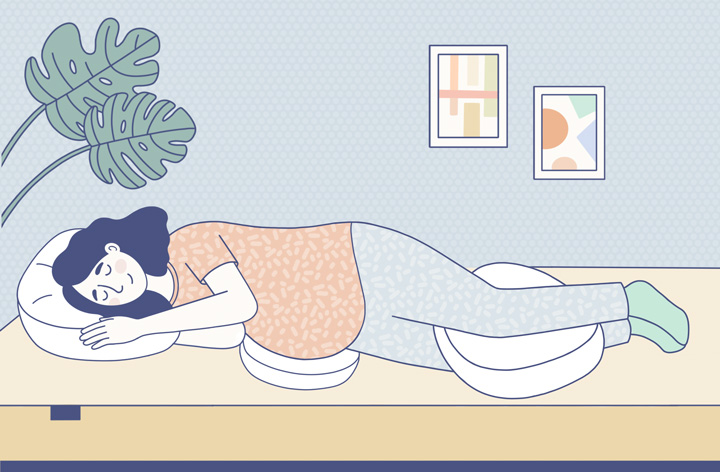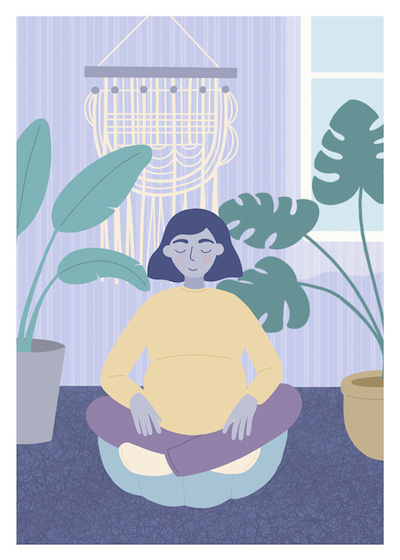Pregnancy and motherhood can bring many new blessings. That doesn’t mean they don’t come with their share of hardships, as well. In fact, pregnancy can quite literally be a pain in the backside, with many expecting women experiencing persistent discomfort in their lower back and tailbone area. This pain, caused by a condition known as sciatica, can often be one of the most serious pregnancy complaints. Don’t worry, we’re going to cover exactly what sciatica is and what you can do to prevent it and lessen that pain.
What is Sciatica?
Let’s start at the beginning. Sciatica refers to pain that radiates from your sciatic nerve, which extends from your lower back into your hips, your buttocks, and down each leg. Sciatica pain is quite common; in fact, about 40 percent of us will experience it sooner or later, though many never identify its real cause.
Sciatica is caused when that important nerve is compressed in some way. This may happen due to a herniated disk, a bone spur, or even simple weight gain, which places more pressure on the nerve. Sciatica can also affect individuals who work jobs that require them to twist their bodies or carry heavy loads, all of which can impact and inflame the spinal nerves.
Sciatica sufferers may experience pain anywhere along the sciatic nerve, though it’s most commonly felt in the lower back, buttocks, and upper thigh. More often than not, sciatica pain is restricted to just one side of the body. Additional symptoms include tingling, numbness, and muscle weakness.
The pain caused by sciatica may make it difficult to fall asleep or to stay asleep. Indeed, because you often put more pressure on your sciatic nerve when you lie down on it, sciatica pain can become inflamed throughout the night, reaching its peak in the morning. Because of this, sciatica sufferers often wake up prematurely, experiencing sharp pain and stiffness on one side of their body.

What is the relationship between sciatica and pregnancy?
There are a number of reasons why sciatica and pregnancy are connected.
- During pregnancy, you put on more weight and retain more fluids, all of which can place additional stress on the sciatic nerve.
- As the uterus expands, it may press upon the sciatic nerve, causing further pain and discomfort.
- As your belly and breasts grow, your center of gravity shifts; this may result in your buttock and pelvic muscles pinching the sciatic nerve.
- It’s also common for the baby’s head to rest directly on top of the sciatic nerve, particularly as the third trimester begins.
Indeed, it’s worth noting that sciatica pain tends to occur in the final three months of the pregnancy, as the baby moves into the birth position and places additional strain on the sciatica nerve.
What are ways to relieve sciatic pain during pregnancy?
While sciatica can lead to significant pregnancy pain and discomfort, there are some practical ways to address it.
Sleep on your side. Sciatica tends to worsen over night, and is often especially bad in the morning, because you place so much strain on the sciatic nerve when you lay down to sleep. Sleeping on your side will generally eliminate that strain, allowing you to sleep more comfortably. Naturally, you’ll want to sleep on your pain-free side.
Use pillows. By placing a pillow or two under your legs or back, you can elevate your lower back and pelvis and limit the pressure on your sciatic nerve. Experiment with different pillow placements that offer you some extra back support.
RELATED: Best Pregnancy Pillows
Try a warm compress. When pain flares up, try a warm compress on the affected area, which can sometimes offer some relief.
Make sure you have the right mattress. Typically, sciatica sufferers benefit from a mattress that’s pretty firm, preventing their hips and pelvis from sinking too deep into the mattress material. Also look for a pressure-relieving mattress, which will help to evenly distribute your body weight and minimize tension in sensitive areas.
Do some Kegel exercises. Some simple pelvic tilts can strengthen the muscles in your core and help reduce sciatica inflammation.
Try not to sit for too long. Sitting all day causes stiffness and exacerbates the pain of sciatica. Getting up and walking around for a little while may cause an initial stab of pain, but stick with it and you should experience some real relief.
Try some simple stretches. There are a number of yoga poses designed to help those who suffer from lower back pain. The seated half pigeon stretch is especially helpful for those dealing with sciatica.
Ensure a comfortable sleeping environment. If sciatica is keeping you up at night, one way you can improve your odds for a restful night’s sleep is to create a really soothing sleep environment. Getting the right mattress is key, but also turn down the thermostat to a cool, comfortable temperature. Eliminate any light sources, including blue light. Use a white noise machine to block out external sounds that might keep you up at night.
Consider acupuncture. A customized session, from an acupuncturist who is skilled in working with pregnant women, can offer targeted, pinpoint relief for the specific areas where you’re experiencing nerve pain.
Don’t Let Sciatic Pain Interfere With Your Sleep
Sciatica can be an unfortunate addition to your pregnancy; however, it doesn’t have to keep you from getting a good night’s sleep. Use these tips to soothe your pain and promote rest, particularly in the final stretch of your pregnancy.


